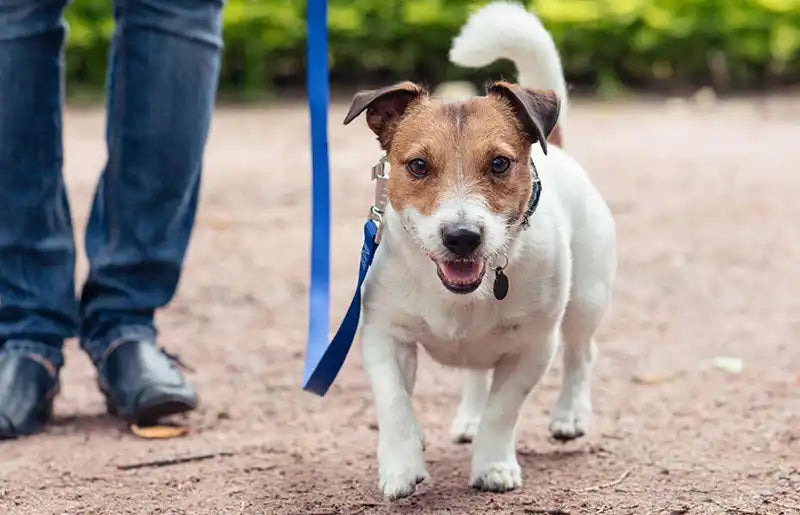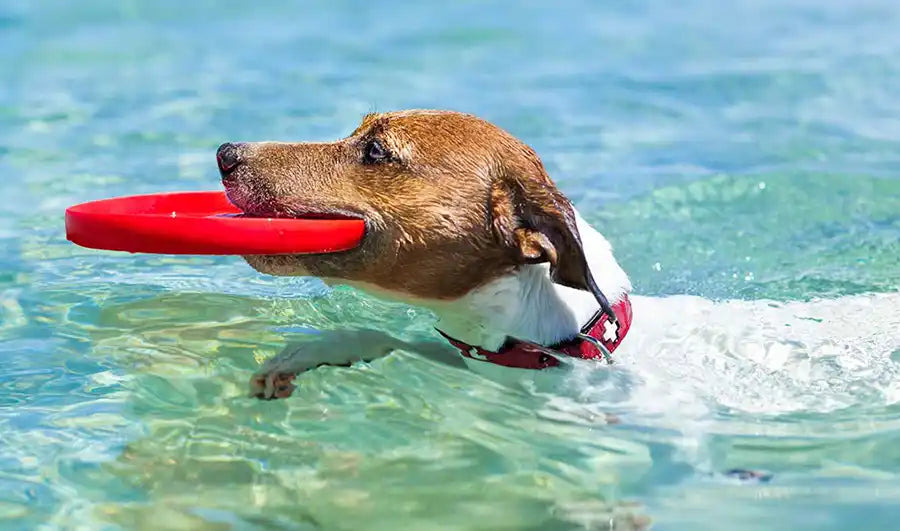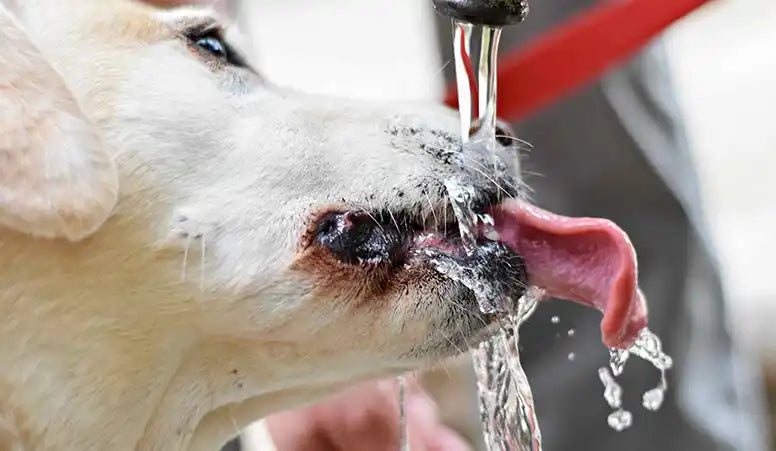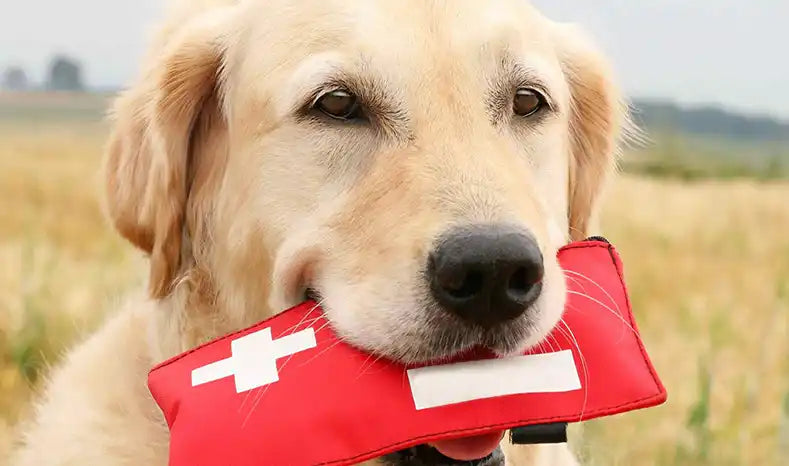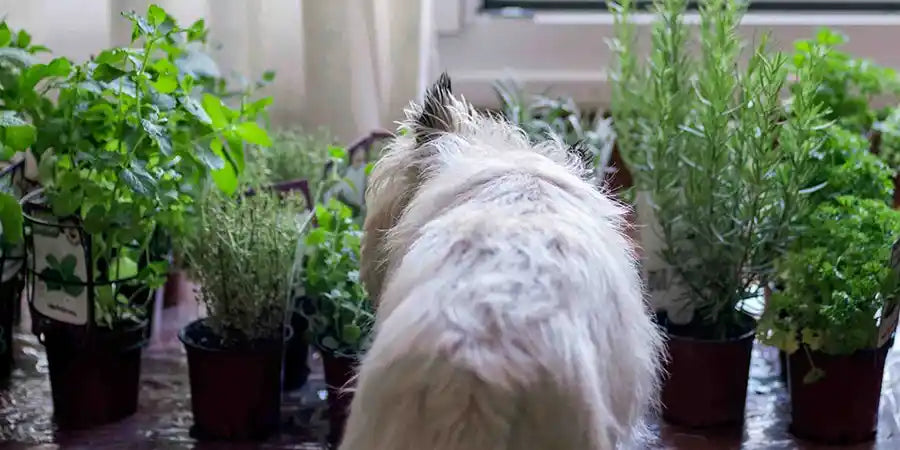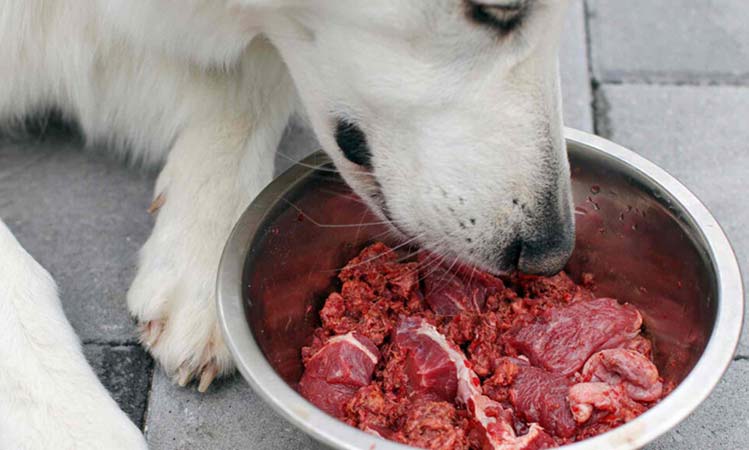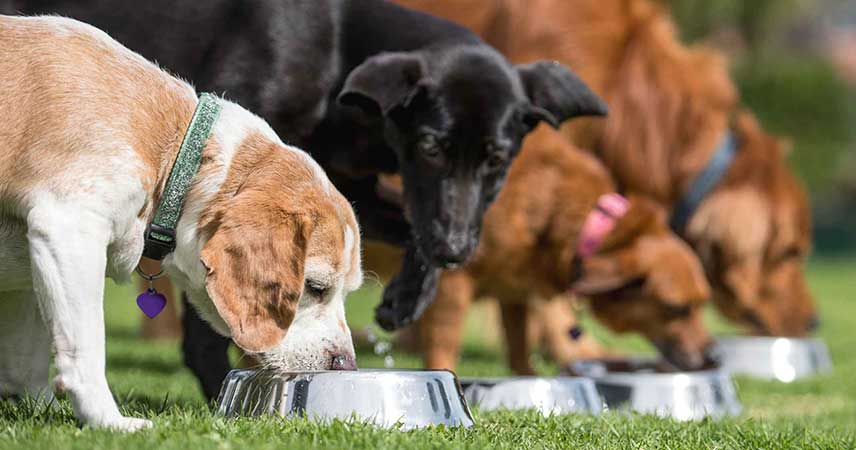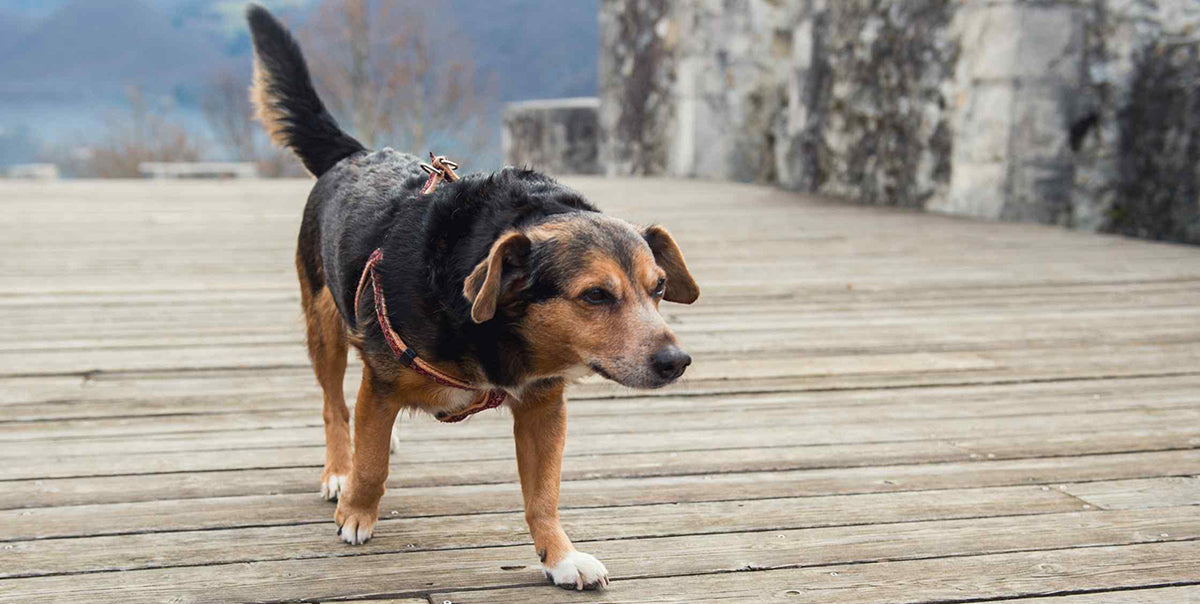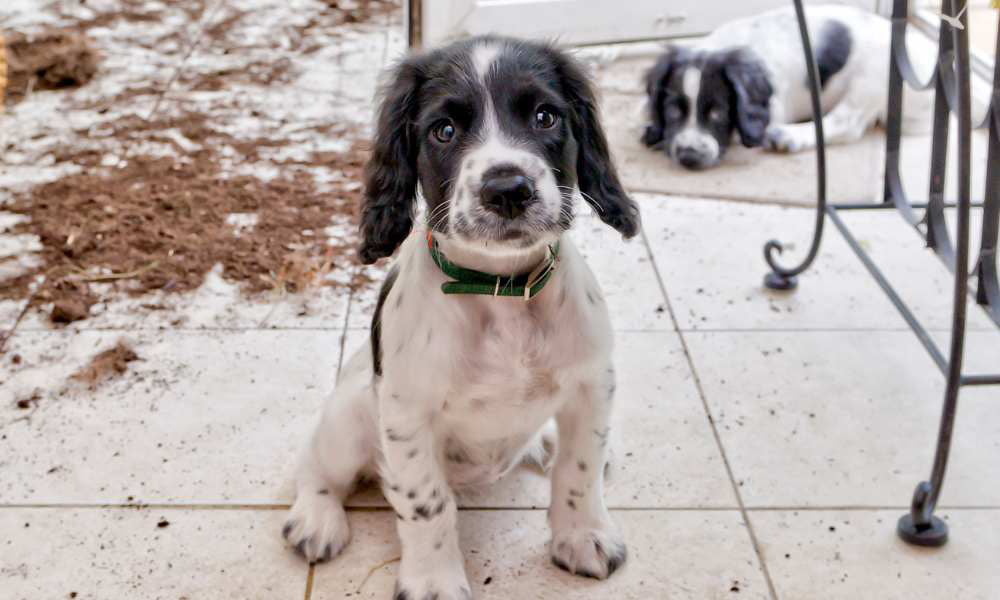Training your dog doesn’t have to feel like a battle of wills. With calm guidance, positive reinforcement, and a pocket full of PetWell’s healthy training treats, you can teach your dog these 7 Practical Dog Training Techniques that will keep them safe and confident.
Why Is Positive Reinforcement the Best Way to Train a Dog?
Modern dog training leans heavily toward reward-based, force-free methods, and for good reason. Dogs learn faster, feel safer, and build stronger trust when we reward the behaviours we want, rather than punishing the behaviours we don’t.
Think of the incredible dogs who work in our community every day, guide dogs, assistance dogs, sniffer dogs, and search-and-rescue dogs. They aren’t trained with fear or force. They’re trained with repetition, clear communication, and well-timed rewards.
And yes, the exact same approach works at home with your family dog.
Whether you’re wrangling a bouncy puppy or giving your older dog a skills refresh, positive reinforcement builds calm, happy behaviour that sticks.
A high-value, single-ingredient PetWell freeze-dried treat certainly doesn’t hurt either.
Gentle positive reinforcement training techniques will always trump fear and punishment when training your dog.
7 Practical Dog Training Techniques Every Dog Should Learn
Here are 7 practical dog training techniques that should be the minimum training level for every dog. The best time to start teaching a puppy to sit is between 10 and 12 weeks old.
1. How Do I Teach My Dog Recall? (Coming When Called)
A solid recall is one of the most important commands your dog will ever learn. It can prevent accidents, stop them bolting, and help them ignore distractions like off-lead dogs, cyclists, or the sacred Australian ibis.
Technique:
- Say your dog’s name to get their attention.
- Use your hand to create a clear visual cue, arm out, hand sweeping back toward your body.
- Say “COME” as soon as they start moving toward you.
- When they reach you, celebrate like they just won the a race: praise + a PetWell freeze-dried treat.
- Repeat 10–12 times per session.
- Once they’re consistent, practise the same steps at the park with plenty of distractions. This is where recall really “sets in” and becomes reliable in the real world.
Remember:
Their name means “look at me.”
“COME” is the actual command.
2. How Do I Teach My Dog to Sit?

“Sit” is the foundation of polite behaviour, and a great way to stop your dog launching themselves at visitors like a furry missile.
Technique:
- Say their name.
- Hold a treat at their nose.
- Move your hand upward and slightly back so they naturally shift into a sit.
- The moment their bottom hits the ground, say “SIT.”
- Reward with a treat and praise.
- Repeat in everyday moments, before meals, crossing the road, greeting guests, putting on the lead.
Gradually reduce treat frequency so they respond reliably, not just when snacks are involved (though PetWell treats are a great motivator).
3. How Do I Teach My Dog to Drop an Item?
Dogs grab whatever they find interesting, socks, tissues, someone else’s tennis ball at the park, the occasional toddler toy…
Teaching DROP keeps them safe and prevents tug-of-war disasters.
Technique:
- Call their name and ask them to COME.
- Once they sit, hold a high-value PetWell freeze-dried treat right at their nose.
- As they lean forward for the treat, they’ll release the item.
- The exact moment they let go, say “DROP.”
- Reward immediately.
- Practise with different objects until they understand the cue, not just the context.
Random reward reinforcement keeps the behaviour consistent over time.
4. How Do I Teach My Dog ‘Leave It’?
“Leave it” prevents your dog from picking up things they shouldn’t, meat scraps, medications, roadkill (because… dogs), other dogs’ toys, or that weird thing they found under the BBQ table.
Technique:
- Place an empty bowl on the ground.
- Walk your dog toward it and say “LEAVE IT” as they lean in.
- Redirect with a treat and reward instantly.
- Practise with low-value items first, then progress to vegetables, meat mix, then high-value foods like plain meat.
- Reward every time they choose you over the object.
This command is a genuine lifesaver when you’re out and about.
5. How Do I Teach My Dog to Lie Down (‘Down’)?
“Down” is helpful during grooming, vet visits, or any situation requiring calm, steady behaviour.
Technique:
- Start with your dog sitting.
- Move a treat from their nose straight to the ground.
- Step back slightly so they follow into a down position.
- As soon as their elbows touch the ground, say “DOWN.”
- Reward with a PetWell treat and praise.
- Slowly extend the time they stay down.
6. How Do I Teach My Dog to Stay?
A reliable stay helps keep your dog safe, whether you're grabbing something from the car boot or stepping briefly out of sight.
Technique:
- Ask for a SIT.
- Say “STAY” while taking one small step back.
- Step forward and reward if they remain still.
- Gradually increase how far and how long you step away.
- Once they can stay consistently, try stepping briefly out of sight.
Only increase difficulty when your dog consistently succeeds at the previous step.
7. How Do I Teach My Dog to Walk at Heel?

Loose-lead walking makes outings enjoyable, no more arm-stretching, zig-zagging, or frantic pulling toward every tree, scent, or pigeon.
Technique:
- Position your dog on your left side.
- Hold high-value treats in your right hand.
- Step forward with your left leg first.
- The moment your dog steps at your side, say “HEEL” and reward.
- After a few steps, reposition your hand, say it again, reward again.
- Use frequent direction changes to keep your dog’s attention.
Once they understand, slowly phase out the treats, but keep a few PetWell tidbits handy during early training walks.
For more behaviour support, read: Dog Behaviour Problems & Natural Fixes
Why Consistency Makes All the Difference
Dogs thrive on predictability. When they understand your cues, and trust you to guide them kindly, they learn faster, feel safer, and stay calmer.
A well-trained dog is:
✔️ less likely to run into danger
✔️ easier to take places
✔️ more confident in new environments
✔️ more relaxed at home
✔️ safer around people, kids, and other dogs
Training isn’t just about obedience. It’s about bonding, communication, and creating a well-rounded dog who knows exactly how to succeed in your world.
FAQ Section
What is the best dog training method for beginners?
Positive reinforcement, also called reward-based or force-free training, is the best place to start. It teaches dogs what to do rather than punishing mistakes. Using small, healthy rewards like PetWell functional treats helps your dog stay motivated, calm, and eager to learn.
What age should I start training my puppy?
Most puppies are ready to start basic commands like sit and come between 10–12 weeks old. Short, fun sessions with high-value rewards help them learn quickly and prevent problem behaviours before they start.
How long does it take to train a dog?
Most dogs need 10–12 consistent repetitions per session to start forming a new behaviour. Full reliability depends on their age, temperament, and how regularly you practise. Short daily sessions work far better than occasional long ones.
What treats should I use for dog training?
Choose small, healthy, high-value treats your dog absolutely loves. Many trainers prefer freeze-dried single-ingredient and functional treats because they’re tasty, high value, clean, and quick to reward with, exactly like PetWell’s Chicken Breast, CALM + Turkey, Lamb Hearts, or Sardines.
Why isn’t my dog listening during training?
Common reasons include:
• too many distractions
• training sessions that are too long
• low-value treats
• unclear cues
• stress or overstimulation
Try training in a quiet area first and reward generously. Switching to a higher-value treat like PetWell CALM + Turkey often transforms their focus instantly.
Can older dogs still be trained?
Absolutely. Older dogs often learn beautifully because they’re calmer and more focused. Using gentle reinforcement and healthy treats makes training enjoyable at any age.
How long should each dog training session be?
Aim for 3–7 minutes at a time. Dogs learn best in short bursts, especially puppies. Finish on a win, reward with something tasty, and stop before they lose interest.
How can I stop my dog pulling on the lead?
Start by teaching heel in a distraction-free area, reward consistently, and change directions often. The moment your dog pulls, stop moving. When the lead loosens, reward and continue. Consistency + high-value treats = magic.
Is punishment ever helpful in dog training?
NO! punishment can create fear, confusion, and behaviours that worsen over time. Reward-based training is safer, kinder, and scientifically proven to work better long-term.
Disclaimer: The entire contents of PetWell emails and website are not to be taken as medical advice. The team at Pet Squad Pty Ltd trading as PetWell encourages you to make your own pet health care decisions based on your research and in partnership with a qualified pet healthcare professional.
This article was prepared by the team at PetWell. Australia’s trusted provider of natural, human-grade pet supplements and freeze-dried treats for dogs and cats. Drawing on holistic animal behaviour insights and years of working with canine clients, PetWell champions kind, calm and scientifically informed solutions for every pet parent.
Posted By Ayda Hornak - Trained in Canine Psychology and Natural Animal Nutrition Care































